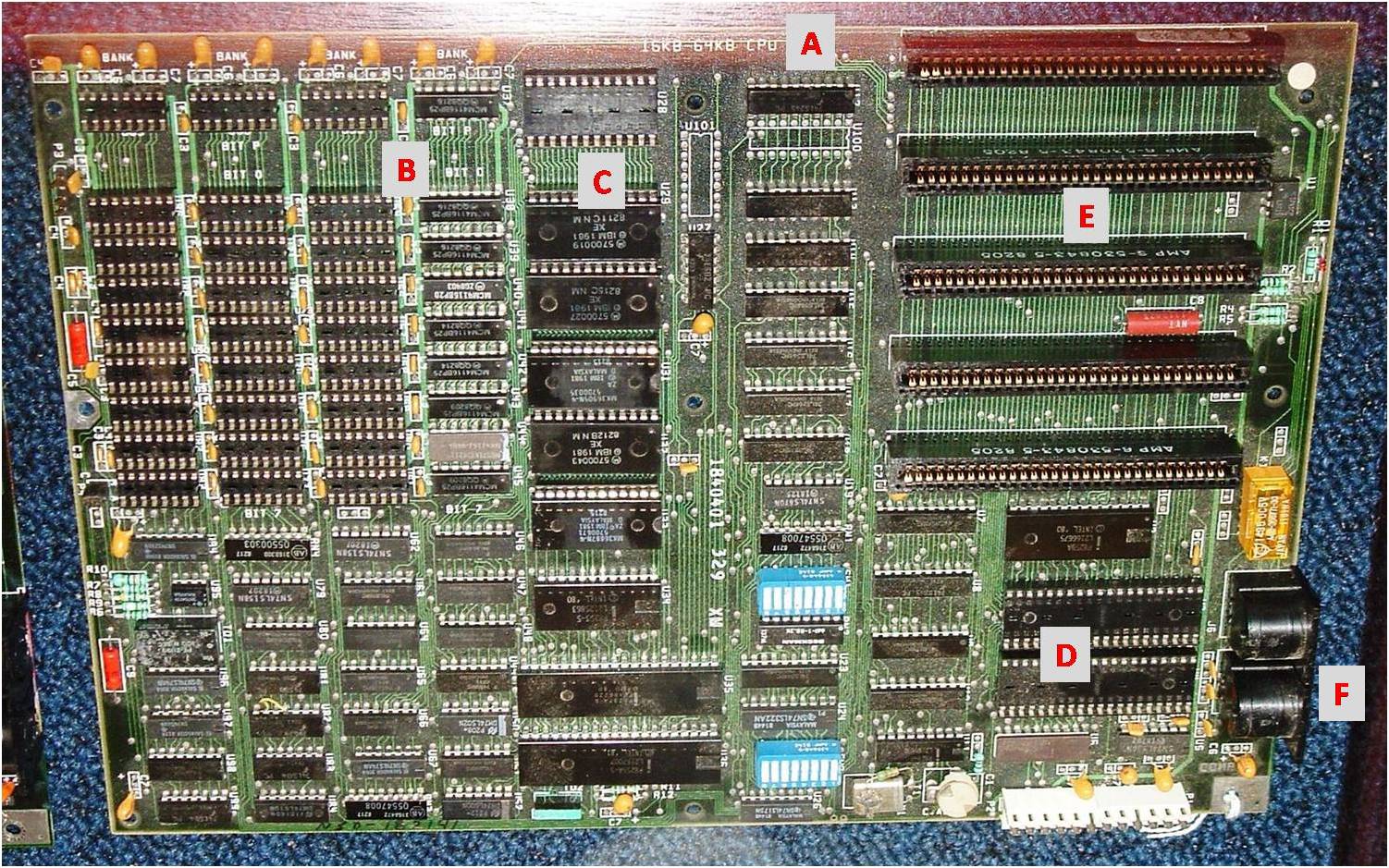IBM 5150 PC Motherboard Version 1
The motherboard in a PC generally contains the CPU, some RAM and some ROM and various other chips that help the CPU in various tasks. There were two versions of the motherboard shipped with the 5150. This version is marked at A as "16KB-64KB CPU." At B are the rows of RAM chips. In this case only the one row of chips on the right is present on this board, so the board contains only 16KB of RAM. We could add the chips in the other three rows and grow it to 64KB.
At C we see a set of 5 ROM circuits. These ROMs contain a version of BASIC. If the PC was booted without a floppy disk in the drive then the system would load the BASIC interpreter into RAM and run it. This BASIC was productd by a small company named MicroSoft. IBM initially approached MicroSoft in order to obtain only this BASIC. But eventually they also purchased DOS from Microsoft. They allowed Microsoft to retain the rights to sell DOS to other buyers with the result that Bill Gates is now the richest man in the world.
The two sockets at D would contain the 8088 processor and the 8087 floating point arithmetic processor. The floating point processor was an optional accessory.
The five sockets at E are the PC bus. This bus transferred data one byte (eight bits) at a time. When the IBM At was released several years later the bus design was changed to transfer two bytes (sixteen bits) at once. This became known as the AT bus or the ISA bus and was eventually incorporated in many clone PCs.
At F are two connectors that would be seen on the back of the PC. One is the connector for the keyboard. The other is for a cassette tape recorder. The BASIC in the IBM PC was designed to save and restore programs on the cassette tapes as well as to the floppy disks.


